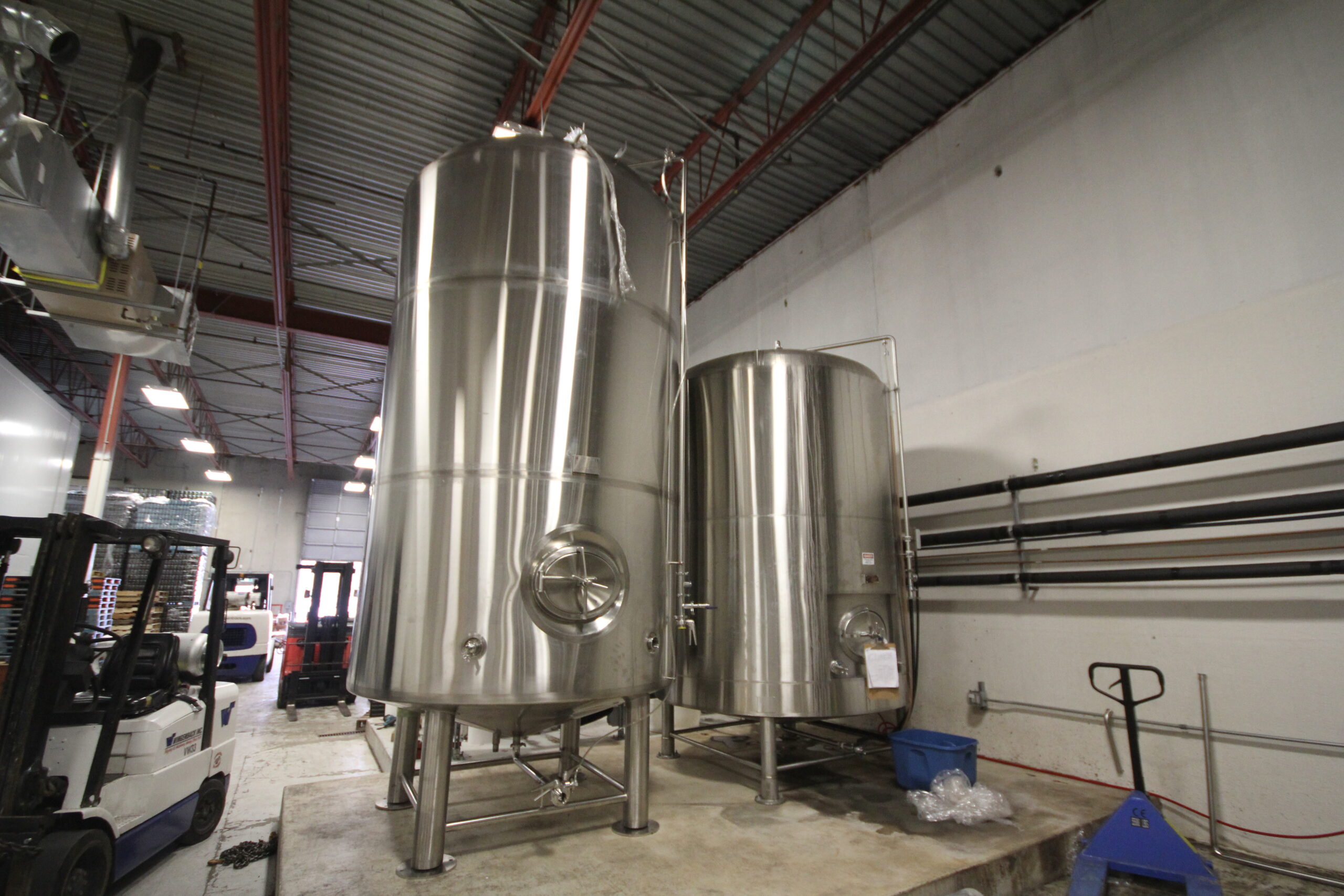A double-zoned fermentation tank is a specialized type of brewing tank that allows for precise temperature control during the fermentation process. The tank is divided into two or more zones, with each zone being independently temperature controlled.
During the brewing process, yeast is added to the wort, and the mixture is allowed to ferment. During this stage, the yeast consumes the sugars in the wort and produces alcohol and carbon dioxide. The temperature of the fermentation process can significantly affect the quality and flavor of the finished beer.
A double-zoned fermentation tank can help ensure that the fermentation process is consistent and that the beer’s quality is maintained. Each zone can be set to a different temperature, allowing for different yeast strains or beer styles to be fermented simultaneously. For example, one zone may be set to a temperature suitable for a lager yeast, while another zone may be set to a higher temperature suitable for an ale yeast. This can help increase production efficiency while still maintaining the quality of the beer.
In addition to temperature control, double-zoned fermentation tanks may also have other features such as automated controls, cooling systems, and pressure relief valves. These features help to ensure that the fermentation process proceeds smoothly and that the beer is of high quality.
In the grand scheme of craft beer and spirits brewing, double-zoned fermentation tanks can be a valuable asset for breweries looking to increase production efficiency while maintaining high-quality beer.
Unitanks For Craft Beer Brewing:
A unitank is a type of brewing tank that is used for both fermentation and carbonation in the beer-making process. It is a versatile vessel that can handle both stages of the process, eliminating the need for transferring the beer to a separate carbonation tank.
Unitanks typically have a conical bottom, which allows for the collection of yeast and other sediments during the fermentation process. They also have a carbonation stone, which infuses the beer with carbon dioxide during the carbonation stage. Unitanks may also have other features such as pressure relief valves, temperature control, and sampling ports to allow for monitoring of the beer’s progress.
One of the advantages of using a unitank is that it eliminates the need for transferring the beer between separate vessels during the brewing process. This can help reduce the risk of contamination, as well as save time and labor costs associated with moving the beer. Additionally, unitanks are typically made of high-quality stainless steel, which is durable, easy to clean, and resistant to corrosion.
Unitanks are commonly used in the brewing industry, particularly for breweries that produce a wide variety of beers. They allow brewers to produce different beer styles using the same vessel, which can help reduce equipment costs and increase production efficiency. Additionally, the ability to monitor and control the temperature and carbonation level of the beer within the unitank allows for a more precise and consistent product.
Bright Tanks For Craft Beer Brewing:
A bright tank is a specialized type of brewing tank that is used for the storage, carbonation, and packaging of beer. It is typically the final vessel in the brewing process before the beer is bottled, canned, or kegged for distribution.
Bright tanks are typically made of stainless steel and are designed to hold beer at a specific temperature and pressure to ensure the beer’s quality and stability. They are usually cylindrical in shape and may have a conical bottom to allow for the collection of sediment during the beer’s storage and maturation.
One of the primary functions of a bright tank is to carbonate the beer by infusing it with carbon dioxide. This is achieved through the use of a carbonation stone, which diffuses carbon dioxide into the beer under pressure. The carbonation level of the beer can be precisely controlled in the bright tank, ensuring that the beer has the desired level of carbonation before it is packaged.
Another function of the bright tank is to clarify and mature the beer before packaging. During the beer’s storage in the bright tank, any remaining yeast, hop particles, or other sediments will settle to the bottom of the tank. This allows the beer to become clearer and improves its flavor profile.
In addition to carbonation and clarification, bright tanks may also have other features such as temperature control, pressure relief valves, and sampling ports. These features allow brewers to monitor and control the quality and consistency of the beer in the bright tank.
In real-world practice, bright tanks are an essential component of the brewing process, providing brewers with a vessel for the storage, carbonation, and packaging of their beer. They help ensure that the beer has the desired level of carbonation, clarity, and flavor before it is distributed to consumers.
Benefits and Efficiency of Double-Sized Craft Beer Brewing Tanks:
Double-sized brewing tanks offer a range of benefits to brewers, including increased production capacity, improved brewing efficiency, and cost savings. Here are some of the benefits of using double-sized brewing tanks:
- Increased Production Capacity: Double-sized brewing tanks have a larger capacity than standard-sized tanks, allowing brewers to produce more beer in a single batch. This means that breweries can produce more beer in less time, leading to increased production capacity and greater profitability.
- Improved Brewing Efficiency: Double-sized tanks can also help to improve brewing efficiency by reducing the number of batches required to produce the same amount of beer. This reduces the time, labor, and resources required for the brewing process, which can lead to cost savings and improved profitability.
- Consistency and Quality Control: Double-sized tanks can help to improve consistency and quality control in the brewing process by allowing brewers to produce larger, more consistent batches of beer. This can result in a more consistent and higher quality product, which can help to build brand loyalty and customer satisfaction.
- Cost Savings: Double-sized tanks can also help to reduce costs associated with the brewing process. By producing larger batches of beer, breweries can reduce the cost per unit of beer, which can result in significant cost savings over time. Additionally, by reducing the number of batches required to produce the same amount of beer, breweries can reduce the amount of time, labor, and resources required for the brewing process.
In conclusion, double-sized brewing tanks can offer a range of benefits to breweries, including increased production capacity, improved brewing efficiency, and cost savings. By investing in larger brewing tanks, breweries can increase their production capacity and improve the consistency and quality of their beer, leading to greater profitability and customer satisfaction. If you have absolutely any craft beer brewing equipment questions do not hesitate to reach out and ask.

